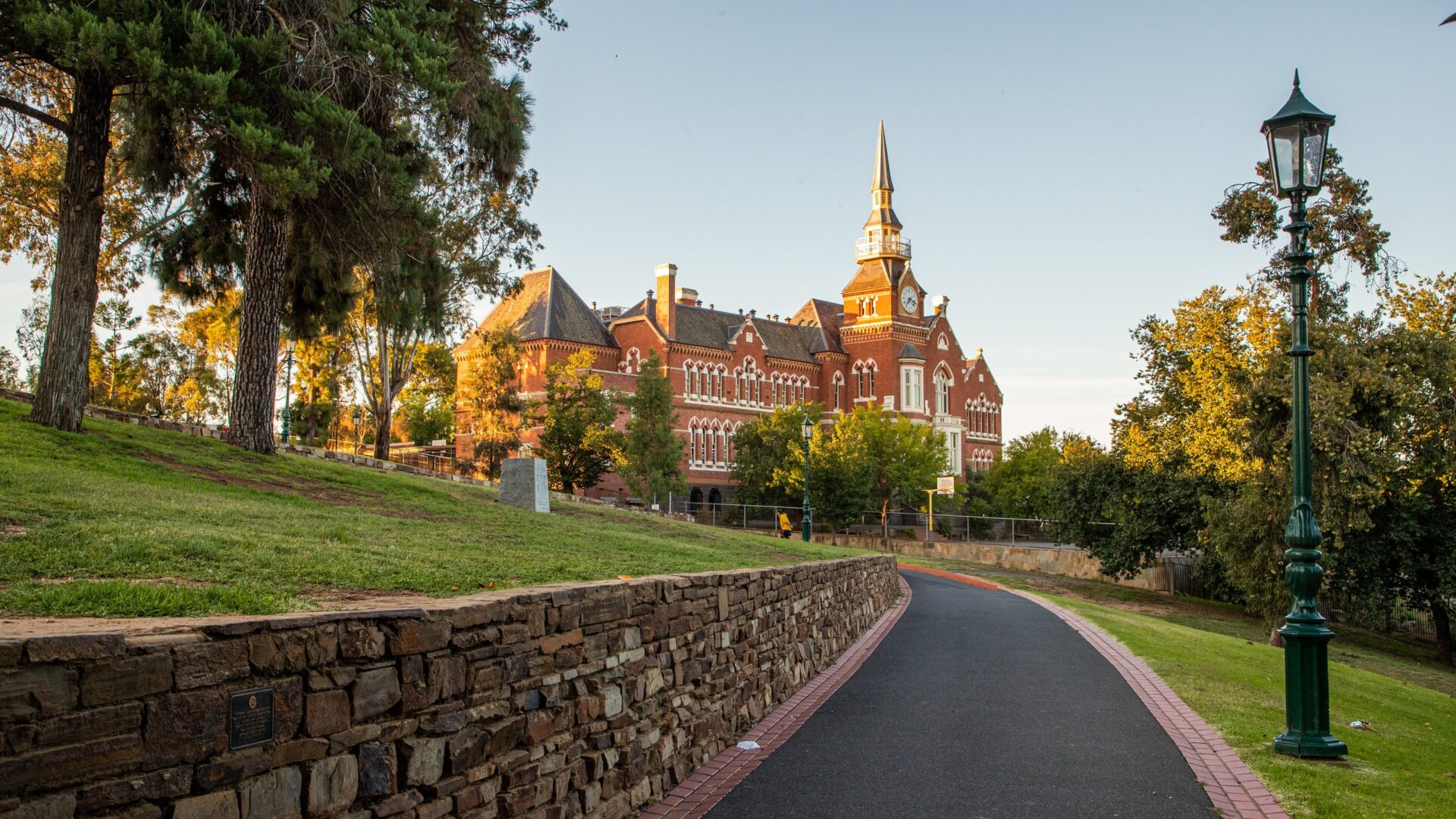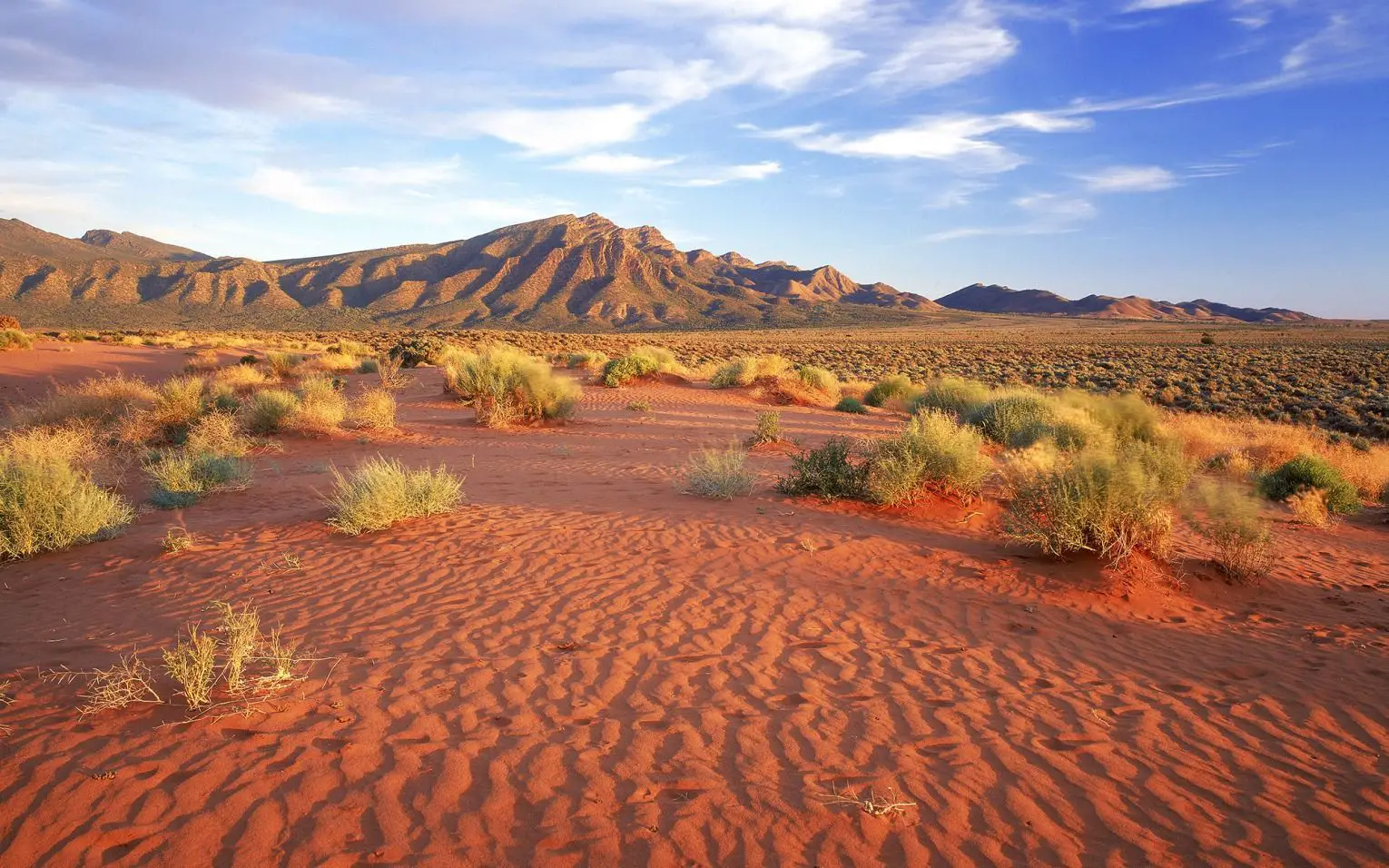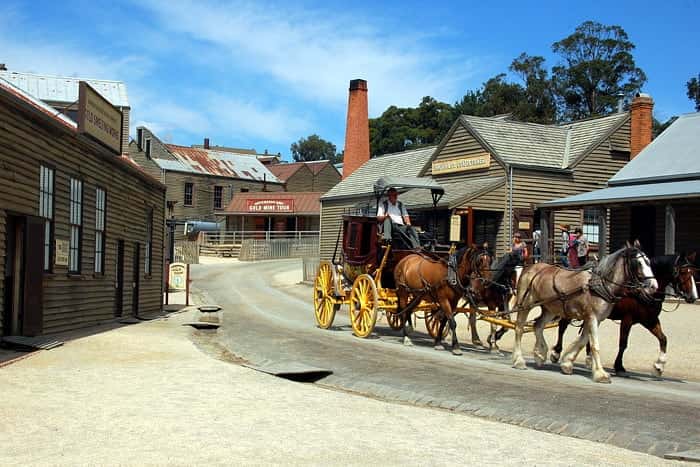The idea of snow in Australia might seem far-fetched, but the truth is that it does snow in certain parts of the country! It may be surprising to some, but many areas of Australia experience snowfall each year. In this blog post, we’ll discuss the places where does it snow in Australia, how often it snows, and what type of snow activities you can do during the winter months. So, let’s dive into the topic Does it Snow in Australia? You might be surprised!
When Does it Snow in Australia?
Surprisingly, Australia does get snow! Although it’s not as common as in other countries, many areas in Australia do get snowfall during the winter season. Depending on the region, the snow season can start as early as May and last as late as October.
In the southeast parts of Australia, especially around the Victorian Alps and New South Wales Snowy Mountains, there is significant snowfall each year. The Australian Alps receive up to 500 inches of snow annually, making them popular destinations for skiing and snowboarding. In the southern states like Victoria and Tasmania, snowfall is more sporadic and usually doesn’t reach down to the cities.
The northern parts of Australia tend to experience very little snowfall. The arid climate in this region makes it difficult for snow to accumulate. However, there have been a few rare occurrences when the snow has fallen in areas such as Queensland and Northern Territory.
Overall, Australia experiences a moderate amount of snowfall each year compared to other countries around the world. While it’s not as common as in other places, snow is still an exciting event that Australians look forward to each year.
Where does it snow in Australia?
Snowfall is not evenly distributed across Australia, with some areas experiencing significantly more snow than others. The highest levels of snowfall are usually found in the mountainous regions of Victoria, New South Wales, and Tasmania.
In Victoria, the highest snowfalls can be found in the alpine resorts of Mount Hotham, Falls Creek, and Mount Buller. These resorts regularly receive snowfalls of up to two meters or more, making them great places for skiing and other winter activities.
New South Wales also has some popular ski resorts that see regular heavy snowfall. Thredbo, Perisher, and Charlotte Pass are all popular destinations for skiers and snowboarders, and all three resorts typically receive over a meter of snow every season.
Tasmania also sees some decent snowfall during the winter months. The ski resort of Ben Lomond near Launceston has become a popular destination for those looking to hit the slopes and receives an average of around 1.2m of snow each year.
In other areas of Australia, snow is much less common but there have been reports of snowfall even in cities like Melbourne and Sydney. In fact, some parts of Australia, such as the Snowy Mountains, experience regular light to moderate snowfalls during the colder months.
What time of year does it snow in Australia?
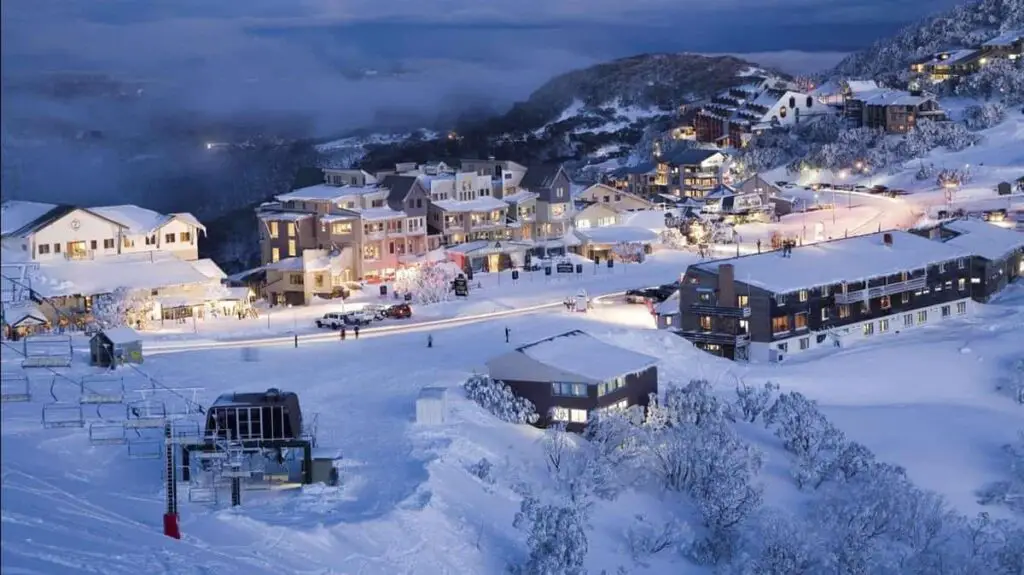
Snowfall in Australia is a seasonal occurrence, and it’s most likely to occur during the winter months of June, July, and August. It usually begins around the middle of June and ends by late August. During this time, snow can be seen on the high mountain peaks of the Snowy Mountains and other mountain ranges in Victoria and New South Wales.
In some parts of Australia, such as Tasmania, snow can be seen during spring and autumn as well. Areas in Victoria and New South Wales experience more regular snowfall throughout the year due to their higher altitudes. These areas include Mount Kosciuszko, Mt Buller and Perisher Ski Resort.
In addition to the colder winter months, snow also falls in some parts of Australia during the summer months. This is due to extreme cold fronts that move through the region. Some areas such as Victoria’s Alpine National Park have reported snowfall even in November.
Overall, snowfall in Australia is highly variable depending on the region and season. While snowfall is less common than in many other countries, Australia does get its fair share of winter weather!
How Much does it snowfall in Australia compare to other countries?
Australia is often thought of as a hot and sunny country, but it can surprise people to learn that it does actually snow in certain parts of the country. While snowfall is much more common in other parts of the world, it is still possible to experience a snowy winter in Australia.
In comparison to other countries, the amount of snowfall in Australia is relatively low. The northernmost parts of Australia tend to get the most snowfall, with an average of around 10-20 cm annually. In comparison, countries like Switzerland and Canada can receive up to 10 meters of snow per year!
The time of year when snow falls in Australia is also different than in other countries. In Australia, snow usually occurs during the winter months of June through August, while in the northern hemisphere, snow falls from December to February. This difference in the seasonal timing of snowfall may be due to Australia’s unique geographical location.
Snowfall in Australia may not be as dramatic or extensive as in other countries, but it still makes for a magical winter experience. Whether you’re skiing down the slopes of Thredbo or simply building a snowman with your family, there’s something special about experiencing a white Christmas in Australia!
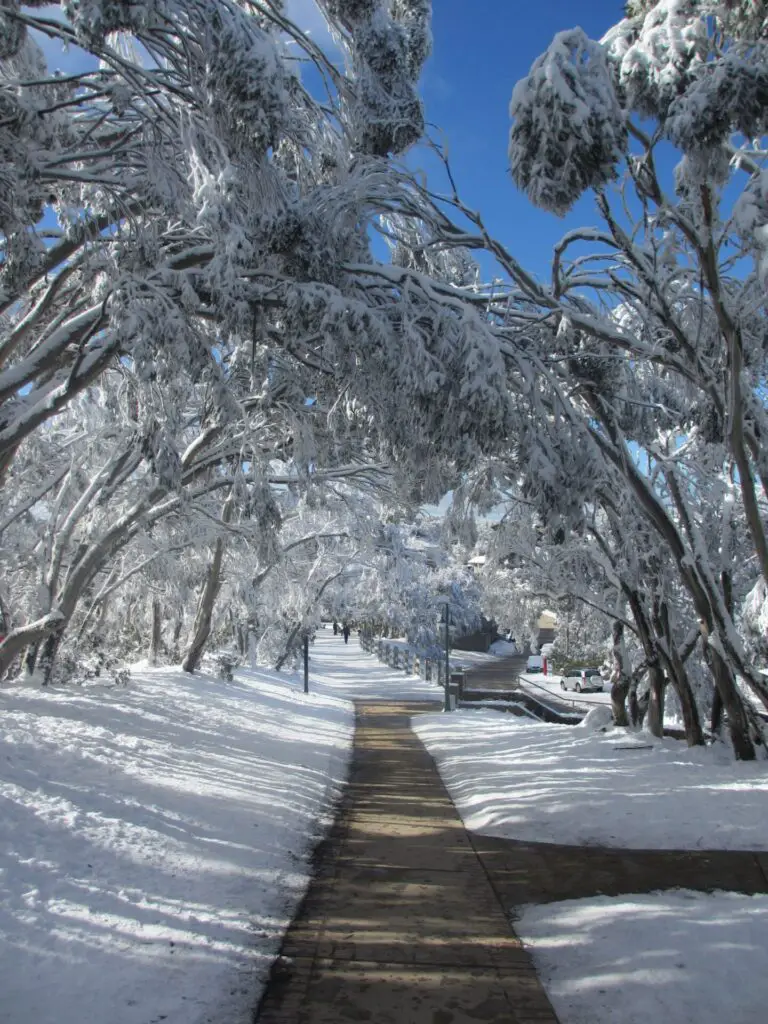
Snowfall in the Month of June
June is an interesting month in terms of snowfall in Australia. Although it is not the most common month for snowfall in the country, some areas may see a flurry or two during the month. In general, June is the last month of the ski season in Australia, so while it is possible to find snow during the month, it is usually limited to the mountain regions.
The state of Victoria generally sees the most snowfall in June, with some alpine resorts getting up to 10cm of fresh powder over the course of the month. The highest peak in Victoria, Mount Bogong, can get up to 20cm during a typical June. However, in more recent years, the snowfall has been reduced due to the changing climate.
The state of New South Wales also gets some snow during the month of June. In particular, the Snowy Mountains region is known to receive up to 15 cm of snow during this time. Other parts of the state such as Blue Mountains and Great Dividing Range may also receive flurries from time to time.
Overall, June is not the most common month for snowfall in Australia but it is still possible to find some snow in certain parts of the country. The alpine regions of Victoria and New South Wales are likely your best bet for finding snow during this time, so if you’re looking for a ski holiday during June, these are your best bet.
Snowfall in Month of July
Although it is not common, snowfall in Australia during the month of July is possible. Snow is most likely to fall in the higher altitudes of the Australian Alps, where temperatures can be significantly cooler than other parts of the country. The two main areas that usually experience snowfall in the month of July are the Snowy Mountains and Victorian Alps.
The highest mountain peak in the Snowy Mountains is Mount Kosciuszko which stands at 2,228m and is a popular destination for skiers and snowboarders. In July, temperatures tend to be lower and you can expect an average temperature of 0°C on the summit. Snowfall can also occur on the lower slopes of Mount Kosciuszko and its surrounding peaks.
In Victoria, Mount Hotham is one of the main ski resorts with an elevation of 1,862m. It typically experiences its first snowfalls in early July, but this does vary from year to year. During July, temperatures on Mount Hotham tend to hover around freezing point, so it is possible to enjoy some outdoor winter activities such as skiing and snowboarding.
Overall, snowfall in Australia during the month of July is not as frequent as other months like August or September, but there is still a chance of snow falling in higher elevations like the Snowy Mountains and Victorian Alps. So if you’re keen to experience some winter weather in Australia during July, then be sure to head to one of these areas!
Snowfall in Month of August
August is the second last month of winter in Australia, and while it may not be as cold as June or July, it still offers some chances of snowfall. In fact, August is one of the most likely months to see snow in some parts of Australia.
In New South Wales, snow is relatively common in the Snowy Mountains during August, particularly on the peaks and surrounding areas like Kosciuszko National Park and Thredbo. You might also get lucky enough to spot some snow in the alpine areas of Victoria and Tasmania during this time.
In other parts of Australia, snow is much less likely in August. However, there is still a chance that you might catch a few flakes falling in the southern regions of Queensland and Western Australia, particularly in higher altitudes.
Overall, August is a great time for snow-seekers to head to the Snowy Mountains for a winter experience. While snowfall isn’t guaranteed in any part of Australia during this time, if you do manage to spot some flakes it’s sure to be an unforgettable experience!
Also Read: Does it Snow in Houston? You May Be Surprised!
How long does winter last in Australia?
Winter in Australia lasts between May and August, with the coldest temperatures typically occurring between June and August. During this period, daytime temperatures tend to average around 12°C (53°F), although night-time temperatures can drop as low as -2°C (28°F). Snow is a rarity in most parts of the country, although it does occasionally fall in some of the alpine regions of Victoria, New South Wales, and Tasmania. In these areas, winter usually brings an abundance of snowfall and skiing opportunities, so if you’re looking for a winter getaway, head to one of these locations for a snowy adventure.
For those who live in snowy climates in Australia, it’s important to have the proper winter wear. Layering is key in cold weather, and since temperatures can vary from day to day, you want to make sure you’re prepared for all weather conditions.
To stay warm and dry in the snow, you should start with a thin base layer of merino wool or synthetic fabrics, like polyester or polypropylene. On top of that, a fleece or wool sweater will provide additional warmth. To protect against wind and wetness, a waterproof and breathable outer layer is essential. Look for something with a hood and/or drawstrings at the bottom. Snow pants are a great addition, as they can keep your legs warm and dry.
What do people wear in the snow in Australia?
In terms of footwear, waterproof boots are ideal for keeping your feet dry and warm. Choose something insulated with a thick sole for the best results. Additionally, make sure you wear plenty of thick, warm socks. If you’ll be outdoors for an extended period of time, it’s also a good idea to bring along extra layers like hats, scarves and gloves.
By following these tips, you can stay warm and comfortable while exploring the snowy terrain of Australia. Don’t forget that even if you’re bundled up, you should always be aware of your surroundings and watch out for dangerous conditions such as ice patches or avalanches. Enjoy the snow!
What are some of the dangers of skiing in Australia?
Skiing in Australia can be a fun and thrilling experience, but it is important to remember that it also comes with some risks. As with any sport or activity, there are inherent dangers that must be taken into consideration. In Australia, the most common risks associated with skiing include avalanches, falling into a crevasse, hitting rocks or trees, and hypothermia.
Avalanches can occur when large amounts of snow accumulate on steep slopes and become unstable, causing an avalanche. These can be incredibly dangerous and unpredictable, so it is important to be aware of the conditions and terrain you are skiing on before venturing out.
Falling into a crevasse is another danger of skiing in Australia. A crevasse is a large crack in the glacier or ice sheet, which can cause a skier to fall through. It is therefore important to be aware of your surroundings and the terrain in order to avoid such dangers.
Hitting rocks or trees can also be a serious issue while skiing in Australia. Skiing is often done on rocky terrain and icy conditions, making it easy to hit something if you’re not careful. It is always important to wear proper safety gear and take care when skiing to minimize your chances of injury.
Finally, hypothermia is also a risk of skiing in Australia. Hypothermia is caused by prolonged exposure to cold temperatures and can be incredibly dangerous. It is essential to wear appropriate clothing and use layers to keep warm while skiing in order to avoid this risk.
Read Related Articles
Does it Snow in Houston? You May Be Surprised!
Does it Snow in Tennessee? The Answer May Surprise You!
Does It Snow In South Africa? Find Out Here!
Does it Snow in Saudi Arabia? Snowflakes in the Arabian Desert
Does It Snow in Nashville? Yes, and Here’s Why You Should Visit This Winter
How Much Does it Snows in Madrid?
FAQ ( Frequently Asked Questions)
The short answer to this question is no, it does not snow in Melbourne. The city of Melbourne is located in southeastern Australia and has a temperate climate with mild summers and cool winters. While the temperature can get low enough for snow to theoretical form, the city’s location near the sea and its proximity to mountain ranges mean that Melbourne does not usually experience any significant snowfall.
The short answer is no. Although igloos can be found in some parts of the world, there are no traditional igloos located in Australia. The Inuit people of North America are the only people who traditionally build igloos as a form of shelter.
However, this does not mean that snow and cold weather are not present in Australia! Despite being located in the Southern Hemisphere, snow can still be found in certain parts of Australia during winter. The Australian Alps located in the southeast corner of the continent are home to some of the best skiing and snowboarding spots in the country.
At higher elevations, temperatures can drop to as low as -15°C or 5°F, and snow is present on the ground for approximately three months of the year. However, while it is possible to enjoy skiing and other winter sports in Australia, no traditional igloos exist due to its warmer climate and lack of permafrost.
In the south-east corner of the country, the Victorian Alps are the most popular place for skiing in Australia. These alps are located near Mount Hotham and Mt Buller and provide excellent conditions for skiers and snowboarders of all levels. The temperatures during winter are usually quite cold, making it a great place for skiing.
In New South Wales, you can ski at Thredbo, Perisher, and Charlotte Pass. All of these resorts offer a variety of terrain, from beginner slopes to expert runs, so everyone can find something they enjoy.
Finally, in Western Australia, there is a small resort called Mount Barker that offers excellent skiing conditions. This area gets plenty of snow during the winter months and is a great place to go if you’re looking for some adventure.
No matter where you go in Australia, you will be able to find a place to ski and have a great time on the slopes. So, if you’re feeling adventurous, why not take a trip to one of these ski resorts and explore the beautiful Australian Alps?
The short answer is no, it does not snow in Perth, Australia. Perth is located in the southern hemisphere and its climate is Mediterranean, meaning it rarely experiences any kind of snowfall. Even during winter months, temperatures usually remain above freezing, so there’s no chance of snow accumulation.
The Welsh mountains and hillsides often get quite heavy snowfall, but it is much less common in the valleys and coastal areas. Generally, most parts of South Wales will receive some snowfall throughout the winter months, although there are also warmer winters where snowfall is limited.
The answer is yes! Snow does occasionally fall in Australia, even though it is not a particularly cold country. The main snow season usually runs from June to August in the south, and from July to October in the south-east of the country. Snowfall occurs mainly in alpine regions, such as the Australian Alps and the Great Dividing Range. The highest recorded snowfall in Australia was in 1966 when Mount Kosciuszko received a whopping 66cm of snow!
It doesn’t get too cold in Australia, but temperatures can drop to -8 degrees Celsius in some parts of the country during the winter months. This is cold enough for snow to form, although the amount of snowfall varies greatly depending on the location.
The snowiest place in Australia is Mount Baw Baw, located in Victoria. Mount Baw Baw gets an average of 12 days of snow per year and its average maximum temperature in winter is only -1.5 degrees Celsius. Other places in Australia where you can find snow include Mount Buller and Mount Hotham (Victoria), Perisher Ski Resort (New South Wales), Thredbo Ski Resort (New South Wales), and Ben Lomond National Park (Tasmania).
So yes, it does get cold enough to snow in Australia! If you’re looking for a snow-filled winter adventure, then look no further than Australia!
When it comes to winter weather in Australia, temperatures can vary drastically depending on where you are. In the southern states such as Victoria and Tasmania, temperatures can drop to around 0-5°C (32-41°F), while in some parts of the north they may reach up to 25°C (77°F). Generally speaking, however, average winter temperatures throughout Australia range from 8-16°C (46-61°F).
Most areas of Australia do experience some kind of winter chill during this time of year, but overall it remains mild compared to other countries in the same latitude. The lack of significant snowfall also contributes to mild winter temperatures throughout the country.
It is important to note that different regions of Australia have distinct climate zones and may experience colder temperatures than others. For example, snowfalls are more common in the mountainous regions of New South Wales, Victoria and Tasmania. Additionally, some areas of the south and south-east coasts may experience lower temperatures due to cold water currents coming from the Southern Ocean.
Overall, if you’re planning a trip to Australia during winter, you can expect milder temperatures than what you might experience in other parts of the world. Just make sure you’re prepared for some cooler evenings and nights and be sure to pack appropriate clothing!
Winter sports are becoming increasingly popular in Australia, with an increasing number of people choosing to ski, snowboard, and play other winter sports during the cold season. Skiing and snowboarding are two of the most popular winter sports in Australia, and there are many resorts in the country that offer excellent skiing and snowboarding experiences. Ice-skating and sledding are also popular winter activities in Australia, as are snowshoeing, tobogganing, and even playing ‘ice’ hockey.
For those who enjoy a bit more of an adrenaline rush, heli-skiing is also an option in some areas of Australia. Heli-skiing involves being airlifted to the top of a mountain in a helicopter, then skiing or snowboarding down the mountain. It’s a great way to explore the backcountry and experience the thrill of off-piste skiing or snowboarding.
Whether you’re an experienced skier or snowboarder or a beginner looking for a way to get started in winter sports, Australia has plenty of options for you to enjoy. With its range of world-class resorts, picturesque snowfields, and incredible natural scenery, it’s easy to see why so many people choose to spend their winter holidays in Australia.
Winter in Australia begins on June 1 and ends on August 31, with the coldest months usually occurring from mid-July to early August. The weather during this period can vary greatly depending on which part of the country you are in. In the south, temperatures tend to hover around the low to mid-teens (Celsius) while in the far north of Australia, temperatures can get as high as 30 degrees Celsius.
In general, winter days will be cool, with night temperatures often dropping below 10 degrees Celsius. Some areas may even experience frost and snow. Rainfall also tends to increase in winter, especially in the south and southwest of the country.
It is important to note that winter in Australia is still a great time to visit, with plenty of activities and attractions to enjoy. For example, you can explore some of the unique wildlife, take part in snow activities or simply relax in a cosy pub with a hot cup of coffee. Whatever your preference, you’re sure to find something to do in winter in Australia!


